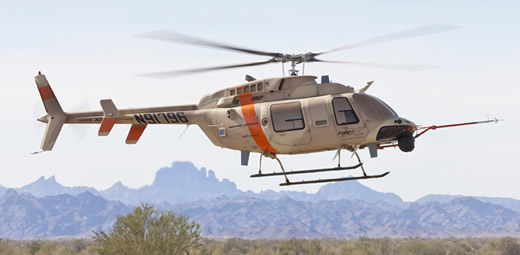
Fire-X, a vertical unmanned air system (VUAS) developed by Northrop Grumman Corporation (NYSE:NOC) and Bell Helicopter, a Textron company (NYSE:TXT), completed its first fully autonomous flight Dec. 10, 2010 at Yuma Proving Ground, Arizona. The experimental aircraft was developed as a low-risk, fast-track solution demonstrating that unmanned helicopters can be safely flown using the proven Northrop Grumman’s MQ-8B Fire Scout’s unmanned systems autonomous flight architecture.
The first flight involved a short-duration hover to validate safe and reliable autonomous flight. Additional flight tests and reliability data gathering will be conducted in the coming weeks. Integration of ISR sensor payloads and cargo carrying capability test flights is set to occur early next year. The Fire-X demonstration aircraft will retain the ability to be optionally piloted – a capability which may appeal to military users because of its added operational flexibility.

According to Paul Meyer, sector vice president and general manager of the Advanced Programs and Technology Division at Northrop Grumman Aerospace Systems, the Fire-X was developed to meet growing needs for cargo and intelligence, surveillance and reconnaissance (ISR) capabilities, anticipating evolving requirements from U.S. military services and Special Operations Command (SOCOM).
The rapid development (first flight was accomplished only 11 months after development began) was achieved by integrating Fire Scout’s proven autonomous systems developed for the U.S. Navy with the proven, FAA-certified Bell 407 helicopter platform. On its new unmanned role The 407 system can carry ISR sensors and a useful load of more than 3,200 pounds. Fire-X will also be able to conduct ISR missions up to 16 hours in endurance and various cargo missions in support of U.S. Army and Marine Corps requirements.



















